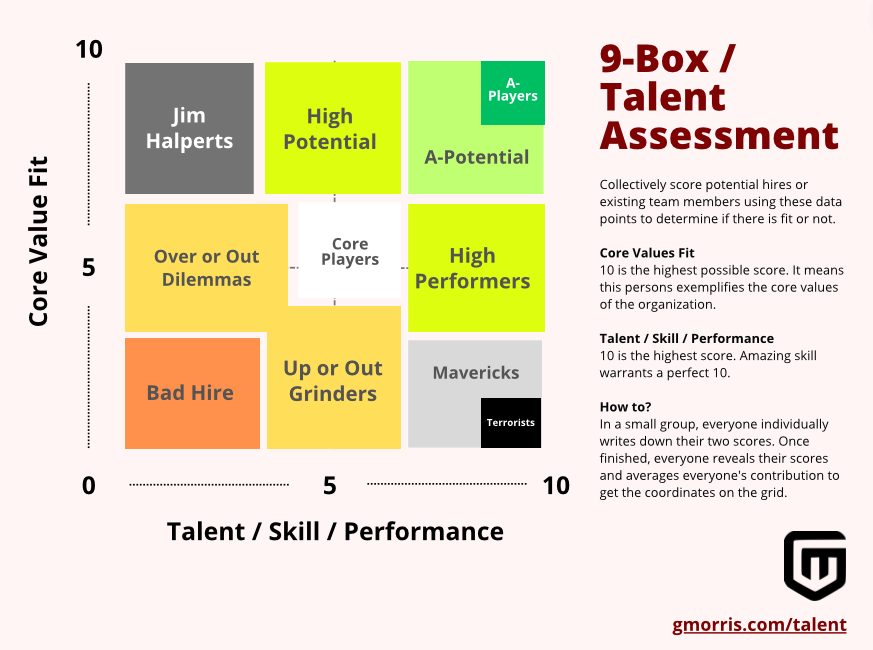What do I do with this Employee?
Receive infrequent tools, workshops and articles related to growing your business!
Fire or Grow an Employee (AI Enhanced)
Here's the deal with this 9-Box. It's for managers like you, scratching their heads over who's pulling their weight and who's just taking up space. It will help you figure folks out. You plop your people into boxes based on how they're doing. It's like a report card for grown-ups, but with consequences.
Now, it's not perfect, nothing is in this cockeyed world of ours, but it might just help you see things clearer. Who needs a little boost? Who's ready for bigger things? And who, well, might need to find their calling elsewhere?
This should help make sense of your team, to help them grow, or to realize when it's time to let go. With this you've got something to point to based on your observations, something that might help you sleep a little better at night. So, if you're game, pick someone on your team. Anyone. And let's walk through this questionnaire. Maybe we'll learn something. Maybe we won't. But at least we're trying, right?


